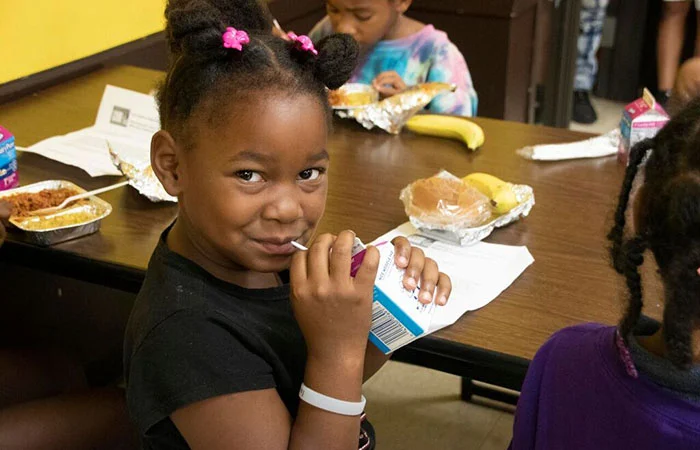How Dairy Farmers, Food Banks Are Partnering to Help Families
Marilyn Easter will never forget the face of hunger.
Easter, who operates a South Carolina dairy farm with her husband, Glen (pictured above), was making one of her regular stops at their local food bank to drop off a donation of milk. As she walked in, she encountered a woman holding a young girl in her arms. The girl reached out for the gallon of milk and her words have stayed with Marilyn ever since.
“She said, ‘Mommy I love milk. I wish we could have more milk,’” Marilyn said. “She hugged that bottle of milk. That’s when it melts your heart. I won’t ever forget it.”
One thing is certain for food banks across the United States: Milk is in demand, but it can be logistically challenging to procure and distribute. When food banks have the money and resources they need, they’re better able to provide local families with the nutrition they need, including dairy. Milk is packed with essential nutrients kids need to grow, including protein, calcium, vitamin D and potassium.
And in the summertime, more than 18 million children may lose access to free or reduced-price school meal programs and, as a result, could miss out on important nutrition. While some programs like the USDA’s Summer Food Service Program help deliver meals when school is not in session, the National School Lunch Program and the School Breakfast Program don’t reach kids during the summer months.
That’s why food banks play a critical role in helping children access nutrient-rich foods like milk and dairy foods.
“All kids deserve a childhood that includes milk,” said Julie Beamer, chief operating officer of Gleaners Community Food Bank of Southeastern Michigan.
But having fresh milk in a food bank is challenging. “Fresh milk is rarely donated into the emergency food network. It is a perishable product, very short-dated, so it does not get donated in,” Beamer said. “The challenge also is having the funds to be able to purchase the milk. Additionally, it takes refrigeration to be able to store it out in the network to make it available to our partners.”
Last year Gleaners surpassed its goal of raising $96,000 for milk donations and its goal of distributing 103,680 gallons of milk. It was able to purchase more than $132,000 in milk and distribute 229,000 gallons of milk to those served by the emergency food network in Detroit and surrounding areas.
Gleaners’ vision is to improve clients’ health outcomes—in part by supplying a glass of fresh milk with every meal—and it’s inspiring donors to support this vision through an annual fundraising program called M.I.L.K. (Making Investments in the Lives of Kids), a campaign that aims to ensure kids have access to all the essential food groups, starting with fresh milk. Gleaners tapped into the power of its relationships with United Dairy Industry of Michigan and Michigan’s dairy farmers that grew the sort of success that attracted more donations.
Meanwhile, the Easters got involved with making milk donations to the United Ministries of Laurens County, South Carolina, three years ago after learning many residents face food insecurity and lacked access to milk.
Marilyn Easter secured funds from the county and state Farm Bureau offices as well as two 4-H clubs and a church youth group. The Easters, who have been married 55 years, pay the balance on 28 gallons of milk delivered each week to the food bank.
“We go twice a week because 14 gallons is all the refrigerator will hold,” Glen said. “If it held another two gallons, we’d donate two more.”
Marilyn said visiting the food bank is always an eye-opening experience. The Easters figure they have provided more than 4,000 gallons of milk over the last three years, but it’ll never be enough.
“You just don’t realize how much hunger is out there until you go on a weekly basis,” she said. “Each time I go through that door, I see more people signing up because they don’t have enough food.”
Glen said it’s natural for farmers to want to give back and help those in need.
“My whole life has been devoted to producing food,” he said. “We’re donating milk because it’s the right thing to do. We knew it immediately. A gallon of a milk for a family who needs it means a whole lot more than whatever dollars I spend to deliver it.”
Adds Marilyn, “Every time I think about that child hugging that bottle, that gets my heart. That makes it all worthwhile.”
Over the last five years, the dairy community has donated more than 31 million servings of milk to children and families in need through The Great American Milk Drive and is committed to providing 50 million servings of milk to children and families in need by 2020. You can take action against hunger and help increase access to nutrient-rich foods by donating milk at www.giveagallon.com. Even a small donation can make a big impact – for as little as $5, food banks can deliver fresh gallons of milk to children and families who need it most right in their community.
















